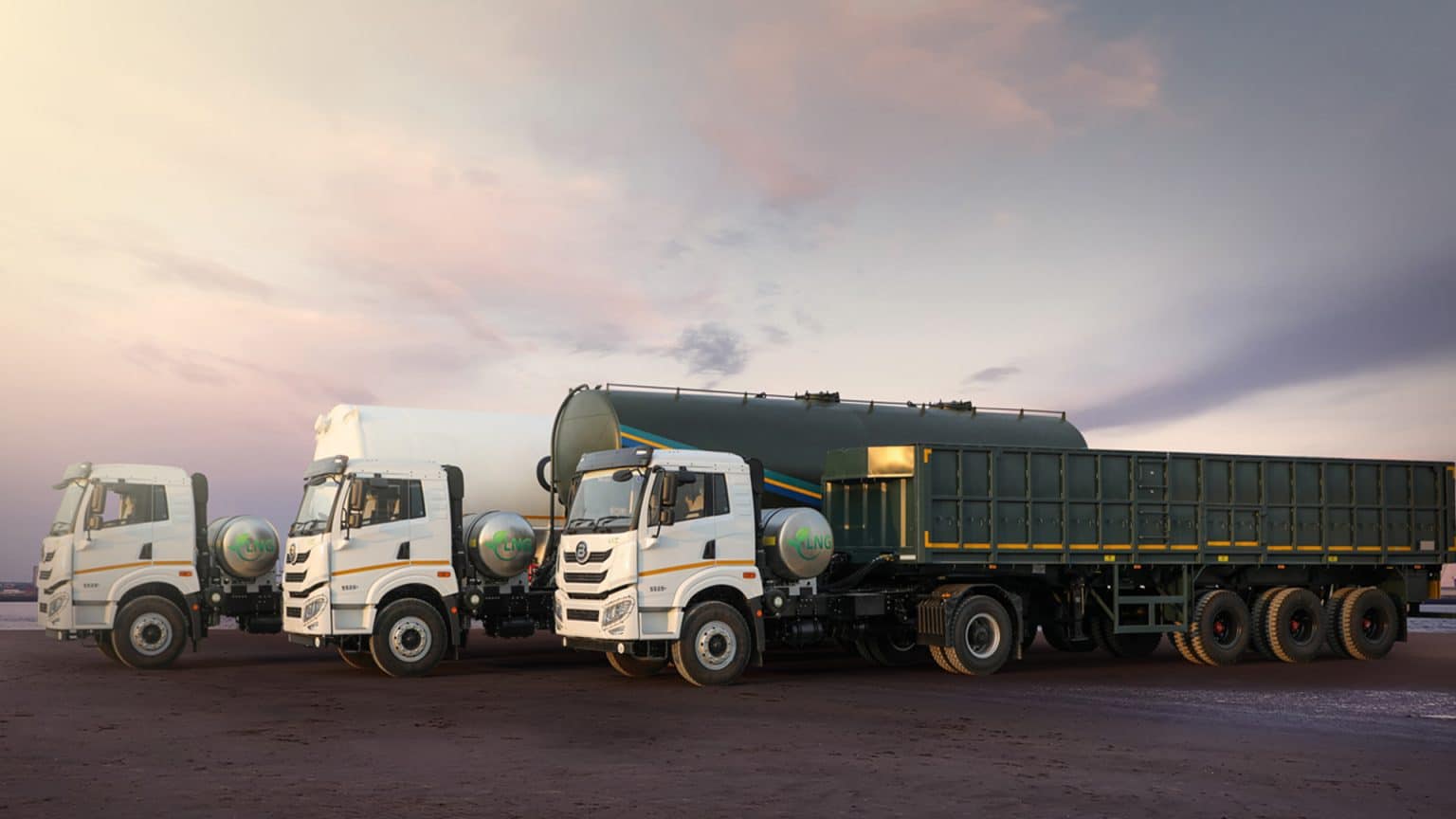
The steel and cement industries are vital for global infrastructure and economic growth but are also major contributors to environmental concerns. They produce significant carbon emissions and consume enormous amounts of energy. According to a report by the Council on Energy, Environment and Water (CEEW), the Indian steel industry emitted 297 million tonnes of CO₂ in 2021-22 during crude steel production, with an average emission intensity of 2.36 tCO₂/tcs, higher than the global average of 1.89 tCO₂/tcs.
Similarly, the Indian cement industry, while among the most energy-efficient globally, inherently produces carbon emissions due to limestone processing and fossil fuel usage. A Statista report reveals that cement manufacturing emissions in India reached 164 million metric tons of CO₂ in 2022, marking a significant increase over recent decades. Traditional transportation methods, mainly diesel-powered trucks for logistics, further impair this impact.
While making strides toward low-emission steel and cement sectors, India actively promotes alternative fuel trucks for logistics to foster low-carbon growth in hard-to-abate industrial sectors. Steel and cement are among India’s most emissions-, energy-, and capital-intensive industries, and the demand from these sectors is rapidly rising due to industrialization and urbanization. Therefore, transitioning to LNG trucks can be crucial in reducing emissions.
Benefits of LNG Trucks
LNG trucks are emerging as a viable, sustainable alternative to traditional diesel trucks. LNG, derived from natural gas, is a cleaner-burning fuel that produces fewer CO2 emissions, nitrogen oxides (NOx), and particulate matter. Industries can substantially reduce their environmental footprint by replacing diesel with LNG in heavy-duty transportation.
An LNG truck has better fuel efficiency, and its lower maintenance and operational costs, coupled with the price differential of fuel, result in a -best-in-class total cost of ownership. One of the most significant advantages of LNG trucks is their extended range. LNG trucks can cover 1,200 to 1,400 kilometers on a single tank, making them ideal for long-haul transportation. This reduces the need for frequent refueling stops, enhancing efficiency in the logistics chain. According to Emkay Research, India could see 50,000 LNG trucks serviced through 400 LNG retail stations by 2030.
Additionally, LNG trucks offer long-term cost savings. Although the initial investment in LNG trucks and fuelling infrastructure can be higher, the benefits quickly accrue. LNG is generally cheaper than diesel, and LNG trucks boast better fuel efficiency.
Another significant benefit of LNG trucks is their quieter operation. Diesel engines are notoriously noisy, contributing to noise pollution in urban areas and along transportation routes. LNG trucks, in contrast, operate more quietly, creating a more pleasant environment for drivers and communities.
Advancing sustainable logistics in steel and cement
The logistics sector plays a crucial role in transporting raw materials like iron ore, coal, and limestone and finished products like steel beams and cement bags in the steel and cement industries. Deploying LNG trucks in these industries can bring substantial environmental and economic benefits. By using LNG trucks for heavy-duty tasks, companies can significantly reduce their carbon footprint and operational costs while improving the quality of life in areas surrounding transportation routes.
OEMs are working with global leaders in alternate fuel green trucks to speed up the production of diverse green truck models. Developing infrastructure like supply networks, LNG pumps, and charging points is crucial for transporters transitioning to green trucks. Key industry players such as Oil Marketing Companies (OMCs), GAIL and its subsidiaries, and Baidyanath Liquefied Natural Gas (BLNG) are working to fulfill this goal.
Cement and steel companies are partnering with logistics providers to incorporate LNG trucks into their supply chains. This collaboration demonstrates a commitment to reducing carbon emissions and achieving sustainability goals.
Breaking barriers in LNG adoption
One of the primary challenges in adopting LNG trucks is the need for extensive refueling infrastructure. Currently, the number of LNG refueling stations is limited, slowing companies from switching. However, this challenge can be addressed through strategic collaborations between the government and the private sector. Investment in infrastructure development is crucial to support the widespread adoption of LNG trucks.
Economic incentives such as subsidies and tax breaks are essential to offset the higher initial costs of LNG trucks and encourage adoption. Governments can play a pivotal role by providing financial support and creating policies favouring cleaner technologies. Such incentives would accelerate the transition and make LNG trucks a more attractive option for businesses.
Continued research and development (R&D) are vital for improving the performance and reducing the costs of LNG trucks. Innovations in engine design, fuel storage, and combustion technology can enhance fuel efficiency and reliability. Additionally, advancements in cryogenic technology for LNG storage can improve the practicality and safety of LNG trucks. The potential for partnerships within the industry is immense. Collaboration between truck manufacturers, fuel suppliers, and logistics companies can drive the adoption of LNG trucks. Joint ventures can share the costs and risks associated with infrastructure development and technological innovation. By working together, stakeholders can create a supportive ecosystem that fosters the growth of LNG truck usage.
The road ahead: Embracing the LNG truck revolution
As the world grapples with the pressing need for sustainability, adopting LNG trucks offers a promising pathway for the steel and cement industries. These trucks provide numerous benefits, including reduced emissions, cost efficiency, and quieter operation. While challenges such as infrastructure development and initial costs exist, they can be overcome through strategic collaborations and economic incentives. By investing in cleaner transportation solutions, these industries can mitigate their environmental impact and pave the way for a greener and more sustainable future. The revolution is already underway, and with continued efforts and collaboration, LNG trucks could become the backbone of a more sustainable logistics network in the steel and cement sectors.
